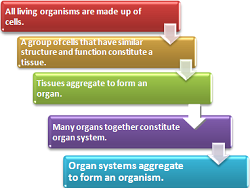Cell-Structure and Functions class 8 Notes Science in PDF are available for free download in myCBSEguide mobile app. The best app for CBSE students now provides Cell-Structure and Functions class 8 Notes Science latest chapter wise notes for quick preparation of CBSE exams and school based annual examinations. Class 8 Science notes on chapter 8 Cell-Structure and Functions Science are also available for download in CBSE Guide website.
Class 8 Science notes Chapter 8 Cell-Structure and Functions
Download CBSE class 8th revision notes for chapter 8 Cell-Structure and Functions in PDF format for free. Download revision notes for Cell-Structure and Functions class 8 Notes and score high in exams. These are the Cell-Structure and Functions class 8 Notes prepared by team of expert teachers. The revision notes help you revise the whole chapter 8 in minutes. Revision notes in exam days is one of the best tips recommended by teachers during exam days.
Download Revision Notes as PDF
CBSE Class 8 Revision Notes Science Cell-Structure and Functions
Cell: The smallest structural and functional unit of an organism, which is typically microscopic and consists of cytoplasm and a nucleus enclosed in a membrane.

- All organisms are made of smaller parts called organs.
- Organs are made of still smaller parts. The smallest living part of an organism is a ‘cell’.
- Cells were first observed in cork by Robert Hooke in 1665.
- Cells exhibit variety of shapes and sizes.
- Number of cells also varies from organism to organism.
- Some cells are big enough to be seen with the unaided eye. Hen’s egg is an example.
- Some organisms are single-celled, while others contain large number of cells.
- The single cell of unicellular organisms performs all the basic functions performed by a variety of cells in multi cellular organisms.
- The cell has three main parts, (i) the cell membrane, (ii) cytoplasm which contains smaller components called organelles, and (iii) the nucleus.
- Cell membrane: The basic component of a cell. The cytoplasm and nucleus are enclosed within cell membrane. There is an outer thick layer in cells of plants called cell wall.
- Cytoplasm: The jelly-like substance present between the cell membrane and the nucleus. Various organelles present in the cytoplasm are:
(i) Mitochondria
(ii) Plastids (present only in plant cell)
(iii) Endoplasmic reticulum (ER)
(iv) Ribosome
(v) Lysosomes
(vi) Vacuole
(vii) Golgi body
(viii) Centrosome (present only in animal cell). - Nucleus: Nucleus is separated from cytoplasm by a nuclear membrane. It is generally spherical in the centre of the cell.
- Nuclear membrane: Nucleus is separated from the cytoplasm by a membrane called the nuclear membrane.
- Nucleolus: Nucleus contains a still smaller round body known as nucleolus.
- Chromosomes: Nucleus contains thread-like structures called chromosomes. These carry genes and help in inheritance or transfer of character from the parents to the off springs
- Cells without well organised nucleus, i.e. lacking nuclear membrane, are called prokaryotic cells.
- Plant cells differ from animal cells in having an additional layer around the cell membrane termed cell wall.
- Coloured bodies called plastids are found in the plant cells only. Green plastids containing chlorophyll are called chloroplasts.
- Plant cell has a big central vacuole unlike a number of small vacuoles in animal cells.
- Size of cells: The size may be as small as a millionth of a metre or may be as large as a few centimetres. Size of the cells has no relation with the size of the body of the animal or plant. It is related to its function.
CBSE Class 8 Revision Notes and Key Points
Cell-Structure and Functions class 8 Notes Science. CBSE quick revision note for class-8 Science, Chemistry, Math’s, Biology and other subject are very helpful to revise the whole syllabus during exam days. The revision notes covers all important formulas and concepts given in the chapter. Even if you wish to have an overview of a chapter, quick revision notes are here to do if for you. These notes will certainly save your time during stressful exam days.
To download Cell-Structure and Functions class 8 Notes Science, sample paper for class 8 Science, Social Science, Science, Science; do check myCBSEguide app or website. myCBSEguide provides sample papers with solution, test papers for chapter-wise practice, NCERT solutions, NCERT Exemplar solutions, quick revision notes for ready reference, CBSE guess papers and CBSE important question papers. Sample Paper all are made available through the best app for CBSE students and myCBSEguide website.
- Crop Production and Management class 8 Notes Science
- Microorganisms class 8 Notes Science
- Synthetic Fibres and Plastics class 8 Notes Science
- Materials: Metals and Non-Metals class 8 Notes Science
- Coal and Petroleum class 8 Notes Science
- Combustion and Flame class 8 Notes Science
- Conservation of Plants and Animals class 8 Notes Science
- Reproduction in Animals class 8 Notes Science
- Reaching the age of Adolescence class 8 Notes Science
- Force and Pressure class 8 Notes Science
- Friction class 8 Notes Science
- Sound class 8 Notes Science
- Chemical Effects of Electric Current class 8 Notes Science
- Some Natural Phenomena class 8 Notes Science
- Light class 8 Notes Science
- Stars and the Solar System class 8 Notes Science
- Pollution of Air and Water class 8 Notes Science

Test Generator
Create question paper PDF and online tests with your own name & logo in minutes.
Create Now
Learn8 App
Practice unlimited questions for Entrance tests & government job exams at ₹99 only
Install Now